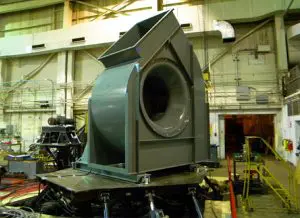
Designated Seismic Systems
The term “Designated Seismic Systems” – where and how it is used in our codes and standards – has caused a certain amount of confusion. The purpose of this article is to dispel that confusion – to the extent possible.
The following table lists the definitions of “Designated Seismic Systems” in every edition of the IBC since its inception in 2000, in the ASCE 7 Standards that provide the bases of the seismic design provisions of those codes, and in the NEHRP Provisions that in turn form the bases of the seismic design provisions of those standards. It can be seen that ASCE 7, in its 2002 and 2005 editions (and in the prior 1998 edition, which was the first one to have its seismic design provisions based on those of the [1997] NEHRP Provisions), modified the NEHRP definition to include the seismic force-resisting system of the structure itself. This modification was never accepted by the IBC, which has always adopted the NEHRP definition. In its 2010 edition, ASCE 7 has harmonized its definition with that of the IBC by not including the seismic force-resisting system.
2012 IBC Section 102.4.1 states: “Where conflicts occur between provisions of this code and referenced codes and standards, the provisions of this code shall apply.” Thus, even before reconciliation in ASCE 7-10, the different definition of “Designated Seismic Systems” in ASCE 7 did not have any practical impact in most of the United States where the IBC is adopted.
Definition of Designated Seismic Systems
|
NEHRP Provisions |
ASCE 7 |
IBC |
|||
|
1997 |
Those architectural, electrical, and mechanical systems and their components that require design in accordance with Sec. 6.1 and that have a component importance factor (Ip) greater than 1. |
|
|
2000 |
Those architectural, electrical, and mechanical systems and their components that require design in accordance with Section 1621 that have a component importance factor, Ip, greater than one. [Section 1613.1] |
|
2000 |
No change from above |
-02 |
The seismic force-resisting system and those architectural, electrical, and mechanical systems or their components that require design in accordance with Section 9.6.1 and for which the component importance factor, Ip, is greater than 1.0. |
2003 |
No change from above |
|
2003 |
No change from above |
-05 |
The seismic force-resisting system and those architectural, electrical, and mechanical systems or their components that require design in accordance with Chapter 13 and for which the component importance factor, Ip, is greater than 1.0. [Section 11.2] |
2006 |
Those architectural, electrical, and mechanical systems and their components that require design in accordance with Chapter 13 of ASCE 7 and for which the component importance factor, Ip, is greater than 1 in accordance with Section 13.1.3 of ASCE 7. [Section 1702.1] |
|
|
|
2009 |
No change from above |
||
|
|
|
-10 |
Those nonstructural components that require design in accordance with Chapter 13 and for which the component importance factor, Ip, is greater than 1.0. [Section 11.2] |
2012 |
Those nonstructural components that require design in accordance with Chapter 13 of ASCE 7 and for which the component importance factor, Ip, is greater than 1 in accordance with Section 13.1.3 of ASCE 7. [Section 202] |
|
|
|
|
|
2015 |
No change from above |
In the 2012 IBC, the term “Designated Seismic Systems” is used in the following sections only:
Section 1704.3.2 Seismic requirements in the statement of special inspections.
Section 1705.11 Special inspections for seismic resistance. This section includes 1705.11.4 Designated seismic systems, which reads as follows:
“The special inspector shall examine designated seismic systems requiring seismic qualification in accordance with Section 1705.12.3 and verify that the label, anchorage or mounting conforms to the certificate of compliance.”
Section 1705.12 Testing and qualification for seismic resistance , including Section 1705.12.3 Seismic certification of nonstructural components, which refers to ASCE 7-10 Section 13.2.
In ASCE 7-10, the term “Designated Seismic Systems” is used in Section 13.2.2 Special Certification Requirements for Designated Seismic Systems. It is also used in Section 13.6.6 Utility and Service Lines. But that section, as the title suggests, is not about designated seismic systems themselves. It states: “The possible interruption of utility service shall be considered in relation to designated seismic systems ….” The term is further used in Appendix 11A QUALITY ASSURANCE PROVISIONS. However that ASCE 7 appendix has never been adopted by the IBC.
It should be obvious from the above that the term “Designated Seismic Systems” is used in our codes and standards to trigger inspection, testing, and certification requirements for architectural, mechanical, and electrical components with Ip = 1.5, which are required to be designed by ASCE 7 Chapter 13 – typically in buildings assigned to Seismic Design Category C, D, E, or F.